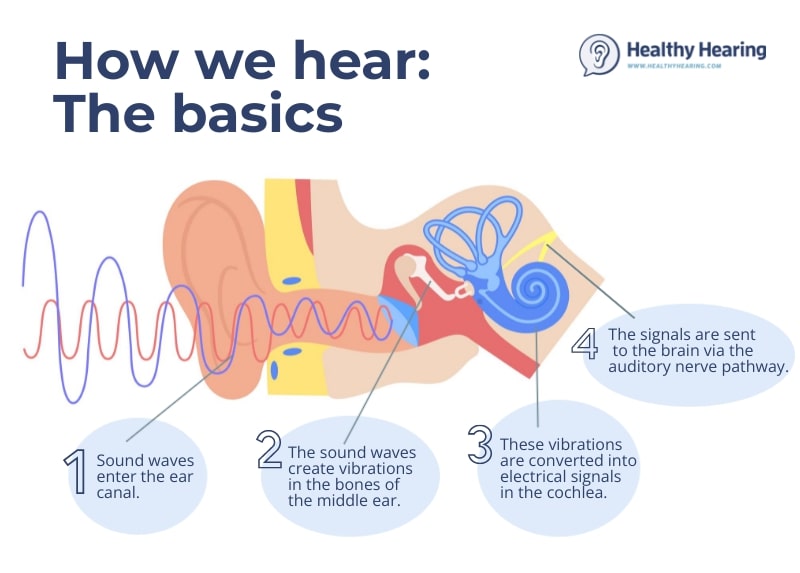The Unseen Evolution: Why Your Next AirPods Pro Upgrade Comes with a Compatibility Catch
In the fast-paced world of consumer technology, the arrival of a new Apple product is always a significant event. The AirPods Pro line, in particular, has consistently set the standard for wireless audio, blending high-fidelity sound with the seamless integration that defines the Apple ecosystem. Each new generation promises groundbreaking features—more powerful Active Noise Cancellation, richer audio, and longer battery life. However, beneath these headline improvements lies a world of subtle, yet critical, engineering changes. These iterative refinements, often invisible to the naked eye, are a testament to Apple’s relentless pursuit of perfection. But they also come with a crucial consequence for consumers: accessory incompatibility.
This article delves into the nuanced evolution of the AirPods Pro, using the often-overlooked example of ear tip design to explore a much broader narrative. We will dissect the technical reasons behind these changes, analyze the ripple effect on the user experience and the accessory market, and place it all within the context of Apple’s overarching design philosophy. Understanding these subtle shifts is key to not only appreciating the engineering prowess behind your devices but also making informed decisions as you navigate the ever-expanding world of Apple accessories news and upgrades.
Section 1: The Anatomy of an Upgrade: Deconstructing AirPods Pro Generational Shifts
When Apple unveils a new iteration of a beloved product like the AirPods Pro, the focus is naturally on the major advancements. For the transition from the first to the second generation, this meant the introduction of the H2 chip, dramatically improved noise cancellation, and the debut of Adaptive Audio. Yet, the most significant engineering stories are often told in millimeters and microns. The physical design of the earbuds and their case underwent subtle but purposeful modifications that are fundamental to their enhanced performance.
The Acoustic Seal: The Science Behind the Ear Tip Redesign
At the heart of any in-ear headphone’s performance is the acoustic seal. A perfect seal is critical for isolating the listener from external noise and for delivering rich, accurate bass frequencies. Any compromise in this seal can lead to a thin, underwhelming sound and ineffective noise cancellation. This is precisely why Apple re-engineered the ear tips for the AirPods Pro 2. While they may look nearly identical to their predecessors, the changes are significant. The new design often incorporates a different mesh density or a slightly altered connector shape. This isn’t an arbitrary change for the sake of differentiation; it’s a calculated decision driven by the new acoustic architecture of the earbuds themselves. The repositioned acoustic vents and redesigned driver in the second-generation model required a corresponding change in the ear tip to optimize airflow and pressure, ensuring the H2 chip could perform its noise-cancellation calculations with maximum accuracy. This is a prime example of how hardware and software advancements, often highlighted in iOS updates news, are deeply intertwined.
Internal Architectures and External Nuances
The internal overhaul of the AirPods Pro 2 necessitated these external tweaks. The H2 chip is not just more powerful; it operates differently, enabling on-device processing for features like Personalized Spatial Audio and Adaptive Transparency. These computational audio features rely on precise data from the inward- and outward-facing microphones. The physical placement of these microphones was adjusted between generations, another small change that has a large impact on performance. This meticulous co-engineering of hardware and software is a hallmark of the Apple ecosystem news, where every component is designed to work in concert. This philosophy extends across all product lines, from the latest iPhone news to the intricate sensors discussed in Apple Watch news.
The Charging Case Evolution
The evolution wasn’t confined to the earbuds. The AirPods Pro 2 charging case introduced a lanyard loop and a built-in speaker. The speaker isn’t for music playback; it provides audible alerts for pairing, low battery, and, most importantly, precise finding with the U1 chip, integrating seamlessly with the Find My network—a feature also central to products like AirTags. More recently, the case transitioned to a USB-C port, aligning it with the broader industry trend and the latest iPhone and iPad models. This change, while seemingly simple, affects charging habits and cable compatibility for millions of users, reflecting a larger strategic shift across Apple’s entire product portfolio.
Section 2: The Ripple Effect: Accessory Incompatibility and the User Experience

The subtle design changes between AirPods Pro generations create a significant ripple effect that extends to the user experience, particularly concerning accessories. For many users, the realization that their old accessories are no longer compatible comes as an unwelcome surprise, turning a seamless upgrade into a frustrating and potentially expensive experience.
The Ear Tip Dilemma: A Case Study in Precision Engineering
The ear tip incompatibility is the most potent example of this phenomenon. A user attempting to fit first-generation tips onto a second-generation AirPod Pro may find they don’t click securely into place. Even if they seem to attach, the seal is likely compromised. This is a common pitfall that directly impacts the product’s core functionality. Using the wrong tips can result in a noticeable drop in audio quality, particularly in the low-end frequencies, and a significant reduction in the effectiveness of Active Noise Cancellation. The built-in “Ear Tip Fit Test” in iOS might repeatedly fail, leaving the user confused. This isn’t a flaw; it’s a consequence of precision engineering. Each generation is a self-contained system, and the ear tip is a critical, calibrated component of that system, not just a piece of silicone.
Beyond Ear Tips: Cases, Skins, and Third-Party Add-ons
The issue extends far beyond ear tips. The slight dimensional changes to the charging case, the addition of the lanyard loop, and the new speaker grille mean that many form-fitting protective cases for the first generation will not fit the second. Consumers who invested in premium leather cases or rugged protective shells find themselves needing to purchase new ones. This underscores the importance of paying close attention to product compatibility when browsing the latest Apple accessories news. It’s a recurring theme for dedicated followers of Apple hardware, from HomePod mini news to the latest AirPods Max news.
A Lesson from History: Apple’s Legacy of Iterative Design
This philosophy of prioritizing forward progress over backward compatibility is not new. It’s woven into Apple’s DNA. Long-time users will recall the transition from the 30-pin connector to the Lightning port, which rendered countless docks and accessories obsolete overnight. This pattern dates back even further; anyone following iPod news through its various generations—from the iPod Classic news and iPod Mini news to the iPod Shuffle news and iPod Nano news—knows that accessories were rarely cross-generational. Even a potential iPod revival news event would almost certainly feature modern ports and a design that breaks from past accessories. Apple’s calculus has always been that the benefits of a thinner design, a faster port, or a better acoustic seal outweigh the inconvenience of accessory obsolescence.
Section 3: The Ecosystem Imperative: Integration, Innovation, and Inconvenience
To fully grasp why Apple makes these seemingly inconvenient changes, one must understand the company’s core philosophy: the ecosystem imperative. Every design decision, no matter how small, is made in service of a larger goal—creating a seamless, integrated, and high-performing experience across all devices. The occasional friction of accessory incompatibility is seen as a necessary trade-off for relentless innovation.
Seamless Integration as the Ultimate Goal
The H2 chip in the AirPods Pro 2 is a perfect example. Its advanced processing power enables features like Adaptive Audio, which intelligently blends Transparency mode and Active Noise Cancellation based on your environment. This feature doesn’t exist in a vacuum; it communicates with your iPhone or Apple Watch to understand your context. This deep integration, powered by regular iOS updates news, is what makes the Apple ecosystem so compelling. The hardware change (the new chip and acoustic design) enables a software experience that feels magical. This synergy is also evident in how AirPods interact with other devices, from the Apple TV for private listening, a topic often covered in Apple TV marketing news, to hands-free interactions with Siri, a key focus of ongoing Siri news.
The Forward March of Technology: From AirPods to Vision Pro

The meticulous engineering of AirPods is a microcosm of Apple’s broader ambitions, particularly in emerging fields like augmented reality. The development of the Apple Vision Pro required an unprecedented level of precision in hardware and software integration. The lessons learned from perfecting the acoustic seal in an earbud are amplified exponentially when designing a device that must perfectly map digital content onto the real world. As we see more Apple AR news, it’s clear that the future lies in devices that are intimately aware of their users and their environment. Accessories for this new platform, whether it’s a specialized Vision Pro wand or new input devices hinted at in Apple Pencil Vision Pro news, will undoubtedly follow the same pattern of rapid, iterative improvement, likely leading to their own generational compatibility challenges. The entire ecosystem, from your earbuds to your spatial computer, is on a relentless forward march.
Privacy and Security Considerations
This march also includes a deep commitment to user privacy and security. The custom silicon in Apple devices, from the A-series chips in iPhones to the H-series in AirPods, features a Secure Enclave that protects sensitive data. The latest Apple privacy news and iOS security news often highlight how on-device processing is used to protect user data. When you use features like Personalized Spatial Audio, the scan of your ear is processed on your device, not sent to the cloud. The secure pairing process between your AirPods and your iPhone is another hardware-enabled security feature. These foundational security measures are built into the silicon, and as the hardware evolves, so do the security capabilities.
Section 4: Practical Guidance for AirPods Pro Owners: Best Practices and Future-Proofing
Navigating the nuances of Apple’s product cycles requires a savvy approach. While you can’t stop the march of innovation, you can make smarter decisions to ensure you get the most out of your devices and accessories. Here are some practical tips and considerations for current and future AirPods Pro owners.
Best Practices for Accessory Purchases
The most important rule is to always buy generation-specific accessories. When purchasing ear tips, cases, or any other add-on, meticulously check the product description and packaging for compatibility with your specific AirPods Pro model (e.g., “2nd Generation”). Be wary of third-party listings that claim a “universal fit” for critical components like ear tips, as this is rarely true for products engineered with such high precision. Stick to reputable brands that explicitly state which generation their products are designed for.

The Importance of the Ear Tip Fit Test
Apple provides a powerful tool to ensure you’re getting the best performance from your AirPods Pro: the Ear Tip Fit Test. Found in the Bluetooth settings for your AirPods on your iPhone, this quick audio test uses the internal microphones to analyze the acoustic seal in your ear canal. It will tell you if the fit is good or if you should try a different size. This is an essential, actionable step. If you’re using incompatible, third-party, or worn-out ear tips, this test will likely fail, providing immediate feedback that your audio and noise cancellation experience is compromised.
Looking Ahead: What to Expect from Future AirPods
The evolution of AirPods is far from over. Future generations are rumored to incorporate even more advanced features, potentially blurring the lines between audio devices and health trackers. We may see biometric sensors integrated for heart rate monitoring or body temperature sensing, which would generate a wealth of new data for the Health app, a constant source of Apple health news. Furthermore, as the Apple Vision Pro news continues to develop, AirPods will become an even more critical companion for private, immersive spatial audio experiences. As these features are added, the physical and electronic complexity of the earbuds will increase, likely continuing the trend of generational accessory incompatibility in the name of progress.
Conclusion: Embracing the Details in a Constantly Evolving Ecosystem
The story of the AirPods Pro and its incompatible ear tips is more than a minor consumer frustration; it’s a perfect illustration of Apple’s entire product philosophy. It reveals a relentless dedication to performance that prioritizes acoustic perfection and technological advancement over backward compatibility. Each generation is a finely tuned system where every component, no matter how small, is optimized to work in harmony. While this can create challenges for consumers in the short term, it is this very approach that pushes the boundaries of what’s possible in personal technology.
For users within the Apple ecosystem, the key takeaway is to embrace the details. Understanding that a new feature often requires a new form allows for more informed purchasing decisions. By choosing the correct, generation-specific accessories and utilizing the software tools Apple provides, you can ensure you are experiencing your device exactly as its engineers intended: at the peak of its performance.











